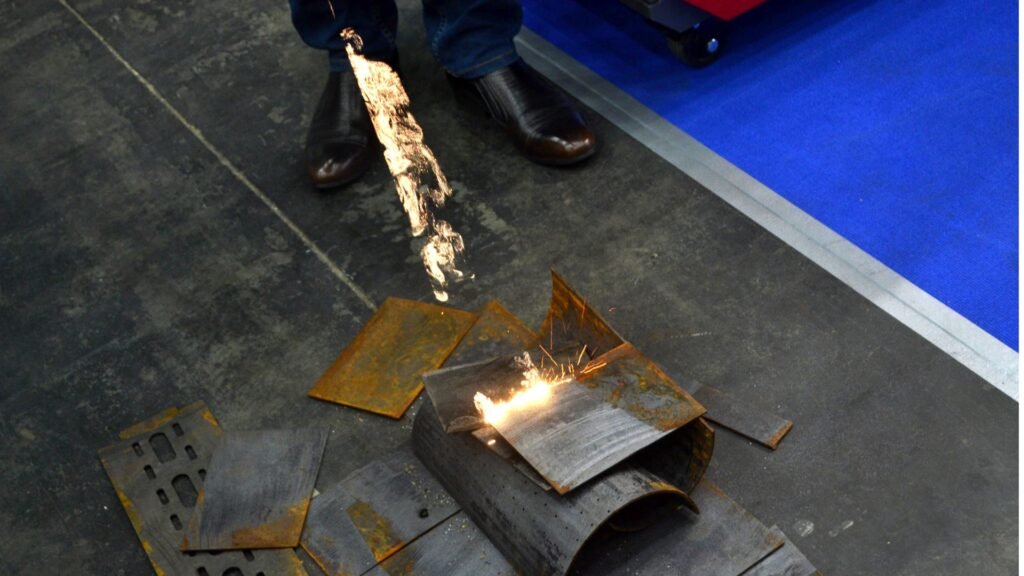Continuous vs. Pulsed Laser Cleaning Machines: Which One is Right for You?
Laser cleaning has revolutionized surface preparation, rust removal, and industrial maintenance by offering a non-abrasive, eco-friendly alternative to traditional cleaning methods. However, when selecting a laser cleaning machine, one of the most important choices is whether to use a Continuous Wave (CW) laser or a Pulsed laser.
In this post, we’ll break down the differences between these two laser cleaning technologies and help you choose the right solution for your needs.
What is a Continuous Wave (CW) Laser Cleaning Machine?
A Continuous Wave (CW) laser cleaner emits a steady, uninterrupted laser beam, continuously heating the surface. This makes it suitable for applications where high-speed cleaning and material removal are required.
Best Applications for CW Laser Cleaning:
✅ Thick Rust & Heavy Contaminants – Effective for removing deep corrosion layers from metal surfaces.
✅ Large Surface Cleaning – Suitable for industrial applications that require rapid cleaning over wide areas.
✅ Paint & Coating Removal – Works well for stripping paint and coatings from metal and other surfaces.
Pros of CW Laser Cleaning:
✔ Faster cleaning speed for large-scale industrial applications.
✔ More cost-effective for heavy-duty cleaning.
✔ Efficient at removing thick rust, oxidation, and coatings.
Cons of CW Laser Cleaning:
❌ Higher heat input can cause surface damage or discoloration.
❌ Less precise than pulsed lasers, making it unsuitable for delicate surfaces.
What is a Pulsed Laser Cleaning Machine?
A Pulsed laser cleaner emits short bursts of high-energy pulses, delivering intense power in a controlled manner. This makes it ideal for applications where precision and minimal thermal damage are required.
Best Applications for Pulsed Laser Cleaning:
✅ Delicate & High-Precision Cleaning – Ideal for sensitive surfaces like historic monuments, electronics, and aerospace components.
✅ Selective Coating Removal – Removes specific layers of paint or contaminants without damaging the base material.
✅ Oxide & Light Rust Removal – Effectively removes surface rust without altering the metal underneath.
Pros of Pulsed Laser Cleaning:
✔ Minimal heat buildup, reducing the risk of material warping or damage.
✔ High precision, making it ideal for delicate and detailed cleaning tasks.
✔ More energy-efficient for applications that require fine control.
Cons of Pulsed Laser Cleaning:
❌ Slower cleaning speed compared to CW lasers.
❌ Higher initial investment for advanced laser pulse technology.
Which One Should You Choose?
| Application | Recommended Laser Type |
|---|---|
| Removing thick rust and heavy corrosion | CW Laser |
| High-speed industrial cleaning | CW Laser |
| Cleaning delicate surfaces (e.g., artwork, electronics) | Pulsed Laser |
| Selective paint or coating removal | Pulsed Laser |
| Removing light rust and oxidation | Pulsed Laser |
Our Recommendation
At Pionlux Technologies, we offer both CW and Pulsed laser cleaning machines to meet different industrial and precision cleaning needs. If you need fast, high-power cleaning for large areas and thick rust, a CW laser cleaner is your best choice. For precise, low-heat cleaning on sensitive surfaces, a Pulsed laser cleaner is the ideal solution.
Need help choosing the right laser cleaning machine? Contact us today for expert advice!

